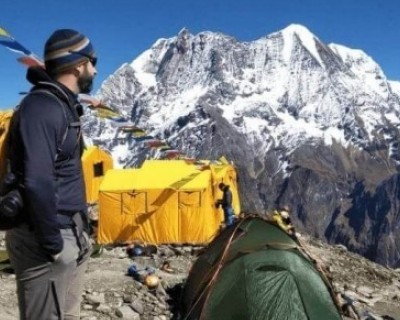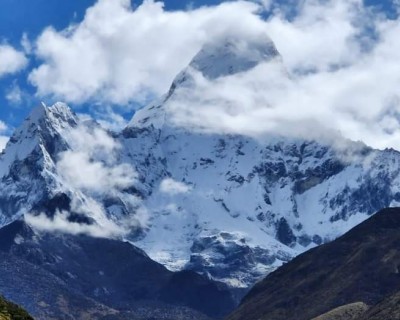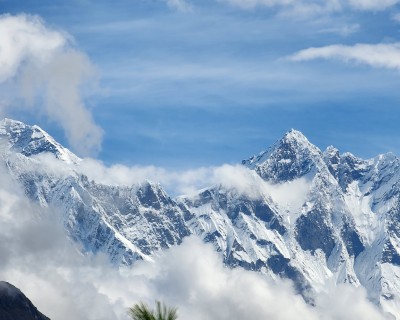Top frequently mentioned questions about Langtang Valley Trek
What is the location of the Langtang Valley Trek?
Langtang Valley Trek is located in the northeast of the capital city, Kathmandu, and is located in the northcentral mountain region of Nepal. It's around 68 kilometers far from Kathmandu valley and lies on the border of Nepal and Tibet. Langtang Valley Trek is covered by the Langtang National Park.
What are the facts and the main information about the Langtang Valley trek?
- Trekking Destination: Langtang Region
- Total trekking days: 6 days to 20 days as you want
- Total traveling destination: 77 km
- Trek difficulty: easy to moderate
- Accommodation: hotel, lodge
- Entry document required: Langtang National Park permit and TIMS card
- Maximum elevation: 4600 meters, Kynajin Ri Park
- Mountain views: Mt Langtang, Langtang Lirung, Yala Peak, Mt Dorje Lakpa, and a few more.
- Solo trekkers: allowed
- Guide and porter: not compulsory.
Can we trek the Langtang Valley trek solo?
Yes, you can trek Langtang Valley Trek solo without hiring a guide. Trekking alone sometimes can lead you to obstacles, the route can be quite confusing when you see different ways, and numerous dense forests, and increase the risks of getting lost.
Planning to trek in peak seasons such as Autumn and spring season, but due to the limited tea house, it will be hard to get a room during this time. So hiring a guide will help you to book your room beforehand. lead you in the right direction to reach the destination.
How difficult is the Langtang Valley trek?
This one is the most frequently asked question about the Langtang trek. so here I came with the answer. Langtang Valley Trek is an easy to moderate level of trek. even the beginner's trekker can complete this trek successfully, I mean you don’t need any other trekking experience.
You should be physically and mentally fit. For the seven days Langtang Trek, on average you should walk around 5-6 hours a day. Walking at a high altitude can be quite tough as you have to wake up early to avoid cold wind. But if you have strong wills and dedication you can easily complete the Langtang Valley Trek without much difficulty.
Can we customize the Langtang Valley trek itinerary account to our needs?
Of course, you can customize the Langtang Valley trek itinerary according to your needs, cost, and duration. Contact us, to customize the Langtang Valley Trek itinerary.
Where can u get a bus to go to the Langtang trek?
Many local buses leave from Kathmandu to Sybrubeshi and Dhunche every day. From here we will start our walking journey to Langtang Valley. Machhapokhari is the well-known bus stop of the capital city, from here you can get easily buses in the morning.
What is the fare of a local bus from Kathmandu to Sybrubeshi?
Leaving for the Langtang trek, a bus from Kathmandu to Sybrubeshi can charge you around 850 MPR but seeing a foreigner, the bus owner can charge you a bit higher than locals.
What is the maximum altitude that we hike in Langtang Valley Trek?
The maximum altitude that we hike in the Langtang Valley trek is Kyanjin Ri standing at an altitude of 4500 meters. If we extend our itinerary and include one more night we can hike even at a higher altitude Tserko Ri which is standing at an altitude of 5000 meters. These points offer amazing views of the mountains and the valley.
What is the itinerary for the Langtang Valley trek?
Langtang Valley trek is of 10 days as we mention below, but there are several ways where you can extend the itinerary as per your needs.
- Day 01: Arrival in Kathmandu
- Day 02: City tour or leisure day
- Day 03: Kathmandu to Syabrubesi drive
- Day 04: Syabrubesi to Lama Hotel
- Day 05: Hike from Lama Hotel to Langtang Village
- Day 06: Trek to Kyanjin Gompa
- Day 07: Option to Climb Tserko Ri, Trek back to Lama hotel
- Day 08: Trek back to Syabrubesi
- Day 09: Drive back to Kathmandu
- Day 10: Departure
Do we need travel insurance for the Langtang Valley Trek?
Yes, you need travel insurance for any trek in Nepal to overcome the loss and bad circumstances such as snow, storms, landslides and other natural disasters, physical accidents, acute mountain sickness, and other natural disasters.
Is the permit necessary for the Langtang Valley Trek?
Yes, you need two types of permits to trek Langtang Valley, one is TIMS Cards and the next one is a National Park Permit. However, the cost of the permit is varied for SAARC countries and other nationalities. In detail below I have listed the price of Langtang trek entry permits:
TIMS card for SAARC nationalities
- Individual travelers = 600 NPR / 6 USD per person
- Trekking through trekking agency = 300 NPR / 3 USD per person
TIMS Card for other nationalities
- Individual traveler = 2000 NPR / 20 USD per person
- Trekking through the travel agency = 1000NPR/ 10 USD per person
Nation park entry cost:
- For SAARC Nationalities = 1695 NPR around 17 USD
- Other nationalities= 3390 NPR around 34 USD
A trekking permit is compulsory for all foreign trekkers to trek the Langtang region. you can get your permit by yourself by visiting Bhirkuti mandap (Nepal Tourism Board) in Kathmandu where you can easily get permits after submitting some required documents with 2 pp size photos. Or give your trekking agency to handle this one.
When is the best time to trek Langtang Valley Trek?
Trekking throughout the year is possible for Langtang Valley Trek but the spring and autumn season is considered the best among four-season due to the stable warm temperature, clear weather, mindblowing mountain views with clear skies, and this season is considered a safe season to explore as well. Being the best season, many trekkers choose this time of the year to explore so if you want peaceful travel, to avoid the crowd you can trek during winter (January to February) if the cold doesn’t bother you a lot, and during the summer season, these time in the years you will not see many peoples and can get comfortable accommodation with good discount in meals too.
Is there any ATM on the route?
Sorry to say but there are no ATMs along the route, also you won’t get any money exchange service, so you should be prepared about this beforehand.
What sort of equipment do I need to carry for the Langtang Valley trek?
It is one of the most tricky questions when we are planning for any trek. As you should be clear about what to carry and what not to carry. Sometimes carrying too much or too little can ruin your journey. So, first of all, you should be sure about when to trek it means which season, be updated about the season, know about its temperature, weather, and many more things. Then start planning to pack your gears.
Remember that you don’t need to carry the things that are not much needed during the trek like your hair dryers, laptops, and many others, it will just make your luggage full.
Trekking the short route like Ghorepani poon Hill Trek, and Langtang valley trek required less gear compared to the long route trekking like Everest Base Camp Trek, and Annapurna Base Camp Trek need more.
Here is some equipment list for Langtang Valley Trek:
Head
- Sun hat/Scarf/caps
- Sunglasses
Upper body
- T-shirt
- Lightweight thermal tops
- Flees jackets
- Waterproof jackets
- Down vest/jackets
Hand
- Lightweight warm gloves
- Heavyweight warm gloves
Lower body
- Hiking sorts
- Undergarments
- Light long cotton pants
- Light warm thermal bottoms
- Warm and waterproof pants
Feet
- Thin inner socks
- Thick hiking socks
- Hiking boots with spare laces
- Camp shoes/ sandals
Accessories
- Sleeping bags
- Duffle bags
- Batteries
- Large plastic bags
- First Aid kit
- Daypack
- Trekking Poles
- Water bottle/camel bags
- Trekking maps
- Solar torch
- Water purifiers/tablets/iodine
- Portable altitude chamber and oxygen
- Medium-size quick-drying towel
- Toothpaste and toothbrush
- Multipurpose soap
- Nail Clipper
- Face and body moisture
- Hygiene product
- Wet wipes
- Toilet paper/tissue roll
- Anti-bacteria hands wash
Hope this article helps you a lot about the Langtang Valley trek, if you want to know more about the top trekking destination in Nepal, or need any help related to this, then don’t forget to contact us: at [email protected]
Thank you!

.jpg)






